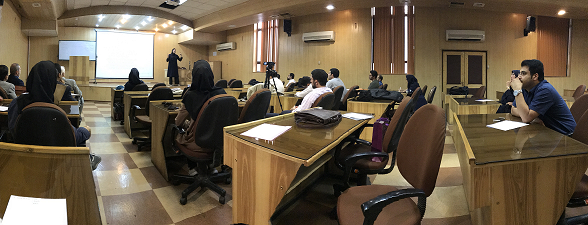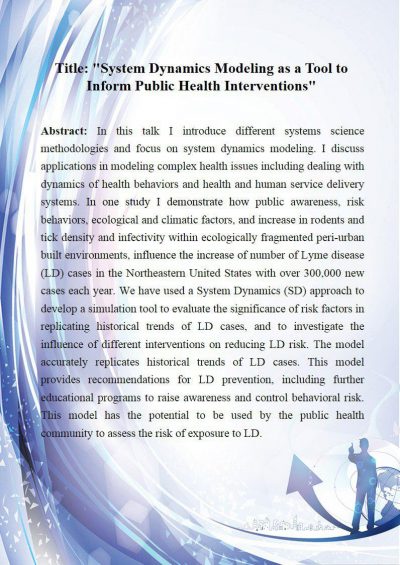انجمن ایرانی پویاشناسی سامانهها در راستای اهداف آموزشی خود، سخنرانی علمی با موضوع “مدلسازی پویاشناسی سامانهها بعنوان ابزاری برای طراحی سیاستهای بهبود بهداشت عمومی” توسط خانم دکتر نسیم صابونچی، استادیار دانشگاه ایالتی نیویورک را برگزار می نماید.
این سخنرانی یکشنبه مورخ 15 / 05 / 1396 ساعت 17 الی 19 در سالن کنفرانس طبقه اول دانشکده مدیریت و اقتصاد دانشگاه صنعتی شریف برگزار می شود.
از علاقه مندان به حوزه پویاشناسی سامانه ها دعوت می شود در این سخنرانی حضور بهم رسانند.
Title: “System Dynamics Modeling as a Tool to Inform Public Health Interventions”
Abstract: In this talk I introduce different systems science methodologies and focus on system dynamics modeling. I discuss applications in modeling complex health issues including dealing with dynamics of health behaviors and health and human service delivery systems. In one study I demonstrate how public awareness, risk behaviors, ecological and climatic factors, and increase in rodents and tick density and infectivity within ecologically fragmented peri-urban built environments, influence the increase of number of Lyme disease (LD) cases in the Northeastern United States with over 300,000 new cases each year. We have used a System Dynamics (SD) approach to develop a simulation tool to evaluate the significance of risk factors in replicating historical trends of LD cases, and to investigate the influence of different interventions on reducing LD risk. The model accurately replicates historical trends of LD cases. This model provides recommendations for LD prevention, including further educational programs to raise awareness and control behavioral risk. This model has the potential to be used by the public health community to assess the risk of exposure to LD.
By: Dr. Nasim S. Sabounchi
Assistant Professor
Systems Science and Industrial Engineering,
Binghamton University, the State University of New York












